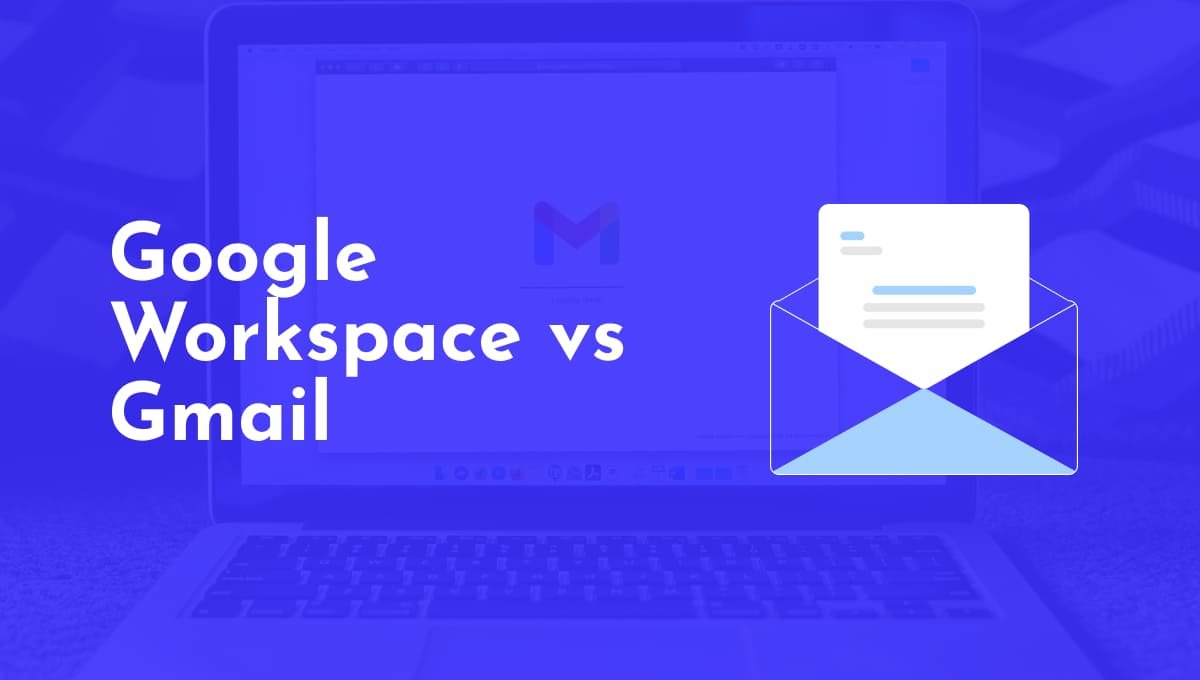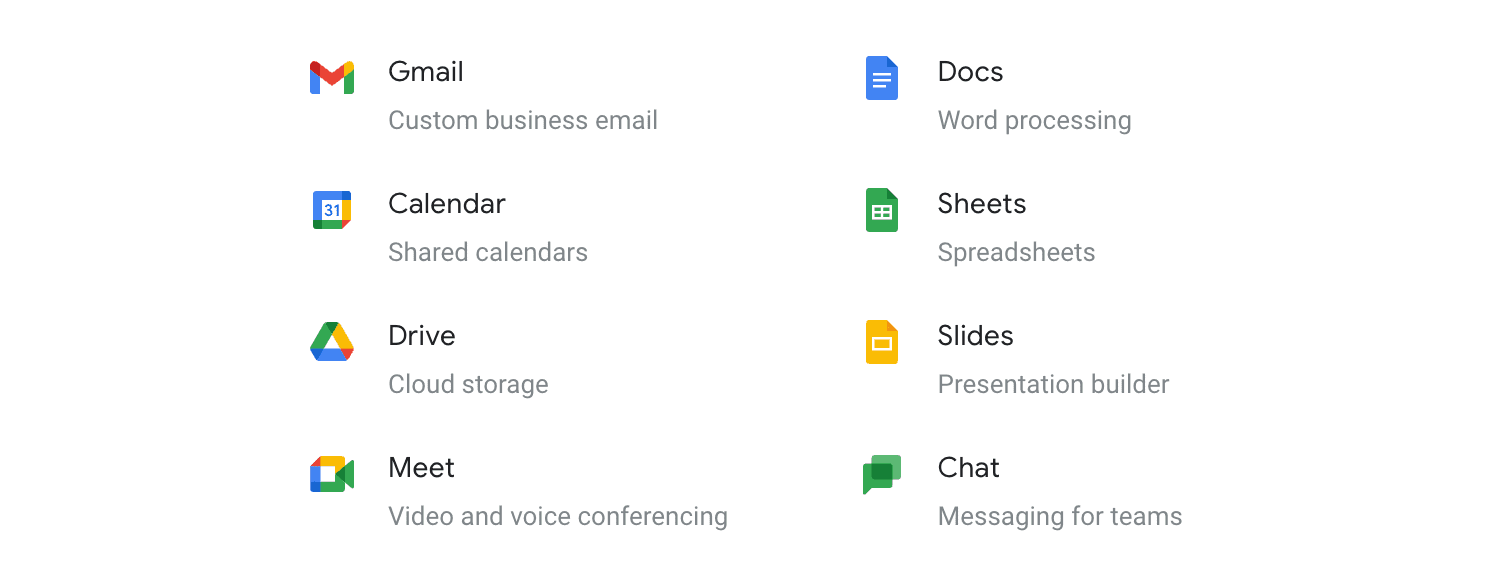Google Workspace vs Gmail: Understanding the Benefits of a Professional Email Account
Email marketing is an essential part of any business strategy, and selecting the right platform can make all the difference. Google Workspace is a powerful suite of tools that offers several benefits over the free Gmail account for email marketing and deliverability.
In this article, we will explore the advantages of Google Workspace over the free Gmail account from the email marketing and deliverability perspective.
What is Gmail?
Gmail is a free, web-based email service developed by Google. Launched in 2004, it has become one of the most popular email platforms globally. Gmail is known for its user-friendly interface, robust security features, substantial storage space, and integration with other Google services like Google Drive and Calendar.
What is Google Workspace?
Google Workspace, formerly known as G Suite, is a collection of cloud-based productivity and collaboration tools developed by Google. It includes various applications like Gmail, Google Drive, Google Docs, Sheets, Slides, Calendar, and Meet, among others. Designed for businesses, schools, and organizations, Google Workspace enables users to collaborate in real-time, share files, and communicate seamlessly across different devices. It offers various plans with different features and storage options, catering to the diverse needs of its users.
The Key Differences Between Google Workspace (G Suite) vs. Gmail
Custom Domain Email Addresses
Custom domain addresses are a critical aspect of email marketing, as they provide businesses with a professional and credible image. When using a custom domain email address, recipients can easily identify the business or organization that is sending the mail. This creates a sense of trust and confidence, making them more likely to engage with the email.
In contrast, using a free Gmail account with a generic @gmail.com domain may not convey the same level of professionalism and credibility. This is because anyone can create a free Gmail account, and the email address does not contain any information about the business or organization.
Additionally, using a custom domain email address makes it easier for businesses to establish their brand identity. By including their company name in the email address, businesses can create a consistent and recognizable brand image across all their communication channels.
Higher Email-sending Limits
The email sending limit is a crucial factor to consider when selecting an email platform for businesses that rely heavily on email marketing.
With Google Workspace, users can send up to 2,000 emails per day, which is four times the limit of the free Gmail account, which allows only 500 emails per day. This higher sending limit is particularly useful for businesses that conduct email marketing campaigns or send newsletters to a large subscriber list.
Cost
Google Workspace (formerly G Suite) and Gmail differ in their pricing models. Gmail offers its services for free, catering to individual users. In contrast, Google Workspace provides four distinct pricing tiers, each tailored to meet the needs of different users, including individuals, small businesses, larger organizations, and enterprises. The monthly cost per user in Google Workspace varies based on the tier, ranging from $5 to $16, reflecting the specific features and capabilities suitable for each use case.
Better Email Deliverability
Email deliverability is a crucial factor to consider when selecting a platform, particularly for businesses that rely heavily on email marketing. It refers to the ability of an email to reach the recipient's inbox and avoid being blocked or sent to the spam or junk folder. While avoiding spam trigger words is important when sending marketing campaigns, Google Workspace has a better deliverability rate compared to the free Gmail account, thanks to its advanced spam filters and security protocols.
Google Workspace uses advanced algorithms to identify and filter spam emails, ensuring that only legitimate emails reach the recipient's inbox. The platform also employs advanced security protocols such as DKIM (Domain Keys Identified Mail), SPF (Sender Policy Framework), and DMARC (Domain-based Message Authentication, Reporting, and Conformance) to ensure that emails are authentic and not sent from fraudulent or unauthorized sources.
In contrast, the free Gmail account has a lower email deliverability rate, as it does not have the same level of advanced spam filters and security protocols as Google Workspace. This may result in legitimate mails being marked as spam or sent to the junk folder, which can negatively impact the success of marketing campaigns and daily operations.
Collaboration and Productivity Tools
Google Workspace is more than just an email platform; it offers a suite of collaboration and productivity tools that can greatly enhance email communication between team members and customers. Google Docs, Sheets, and Slides are just a few of the many tools that are available within Google Workspace.
These collaboration tools allow team members to work together on documents, presentations, and spreadsheets in real-time, which can greatly improve communication and productivity. For example, team members can collaborate on a document or presentation and provide feedback in real-time, which can greatly reduce the time it takes to complete a project.
In addition to collaboration tools, Google Workspace also offers several communication tools, such as Google Meet and Google Chat. These tools allow team members to communicate in real-time, which can greatly enhance email communication. For example, team members can quickly discuss a project or provide updates via Google Chat, which can greatly reduce the number of back-and-forth emails.
Integration with third-party CRM and ESPs
The seamless integration of Google Workspace with third-party email service providers (ESPs) like Mailchimp, SendGrid, and HubSpot, and customer relationship management (CRM) systems like Follow Up Boss, Chime, and kvCore, is a significant advantage for businesses that use email marketing to reach their customers. By integrating these platforms with Google Workspace, businesses can streamline their email marketing campaigns, automate their email workflows, and track the performance of their emails.
With this integration, businesses can easily import their email lists from their email marketing platform into Google Workspace, making it easier to manage their contacts and send out targeted emails. They can also create personalized letters, schedule campaigns, and track the open and click-through rates of their emails.
In addition, businesses can use the integration to automate their email workflows and save time by creating email sequences and triggered emails that are sent automatically based on specific actions taken by the recipient. For example, businesses can set up an automated email sequence that welcomes new subscribers and provides them with relevant content or offers.
Enhanced security
Security is a critical aspect of any email platform, especially for businesses that handle sensitive information. Google Workspace offers enhanced security features that help protect user accounts from unauthorized access and prevent phishing attacks.
Two-factor authentication is a security feature that requires users to provide an additional form of identification, such as a code or fingerprint, to access their account. This added layer of security helps prevent unauthorized access to user accounts, reducing the risk of data breaches and other security incidents.
Google Workspace also offers advanced phishing protection to help prevent phishing attacks. Phishing is a type of cyber attack where an attacker tries to trick users into providing their login credentials or other sensitive information. Google Workspace uses advanced algorithms and machine learning to detect and block phishing emails, reducing the risk of successful phishing attacks.
In addition to these security features, Google Workspace also offers other security measures, such as email encryption, data loss prevention, and mobile device management. These features help ensure the safety and security of business emails and prevent sensitive information from falling into the wrong hands.
Conclusion
Selecting the right platform is crucial for businesses that rely heavily on email marketing and communication. Google Workspace offers several benefits over the free Gmail account, including custom domain email addresses, higher email sending limits, better email deliverability rates, collaboration and productivity tools, integration with third-party email marketing and CRM systems, and enhanced security features.
Google Workspace provides businesses with a powerful suite of tools that can help them manage their email communication and daily operations more efficiently and effectively. With its advanced spam filters and security protocols, businesses can rest assured that their email communication is secure and protected from unauthorized access and cyber attacks.
By providing a professional and trustworthy image to recipients, businesses can improve their brand identity and establish a consistent and recognizable brand image across all their communication channels. The integration with third-party email marketing and CRM systems can help businesses streamline their email marketing campaigns, automate their workflows, and track the performance of their emails.
Overall, Google Workspace is an excellent email platform for businesses that want to improve their email communication, productivity, and security. Its comprehensive suite of tools and features can help businesses of all sizes and industries manage their email communication and daily operations more efficiently and effectively.
If you need help getting started with Google Workspace or have any questions about its features and benefits, please don't hesitate to contact us at info@alexshakhov.com. We will help you make the most of this powerful email platform and take your email communication and productivity to the next level.





